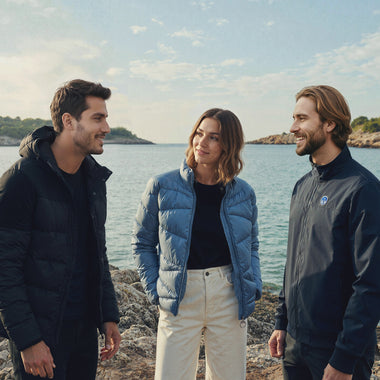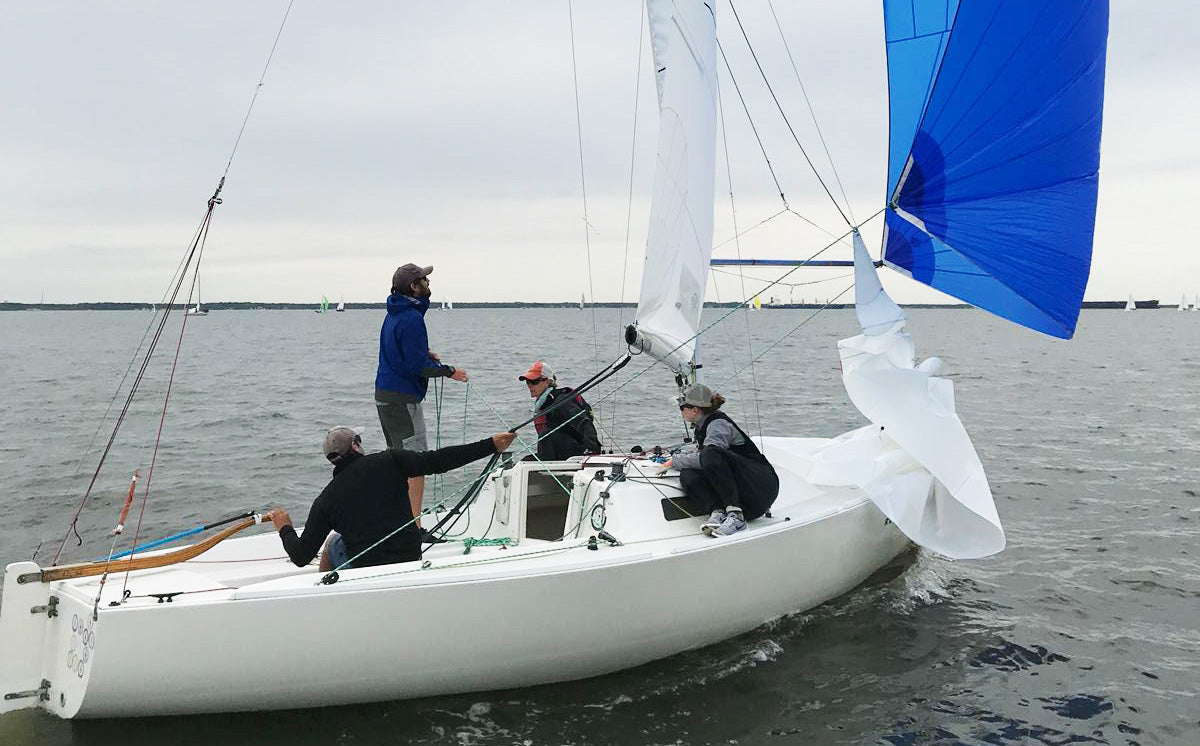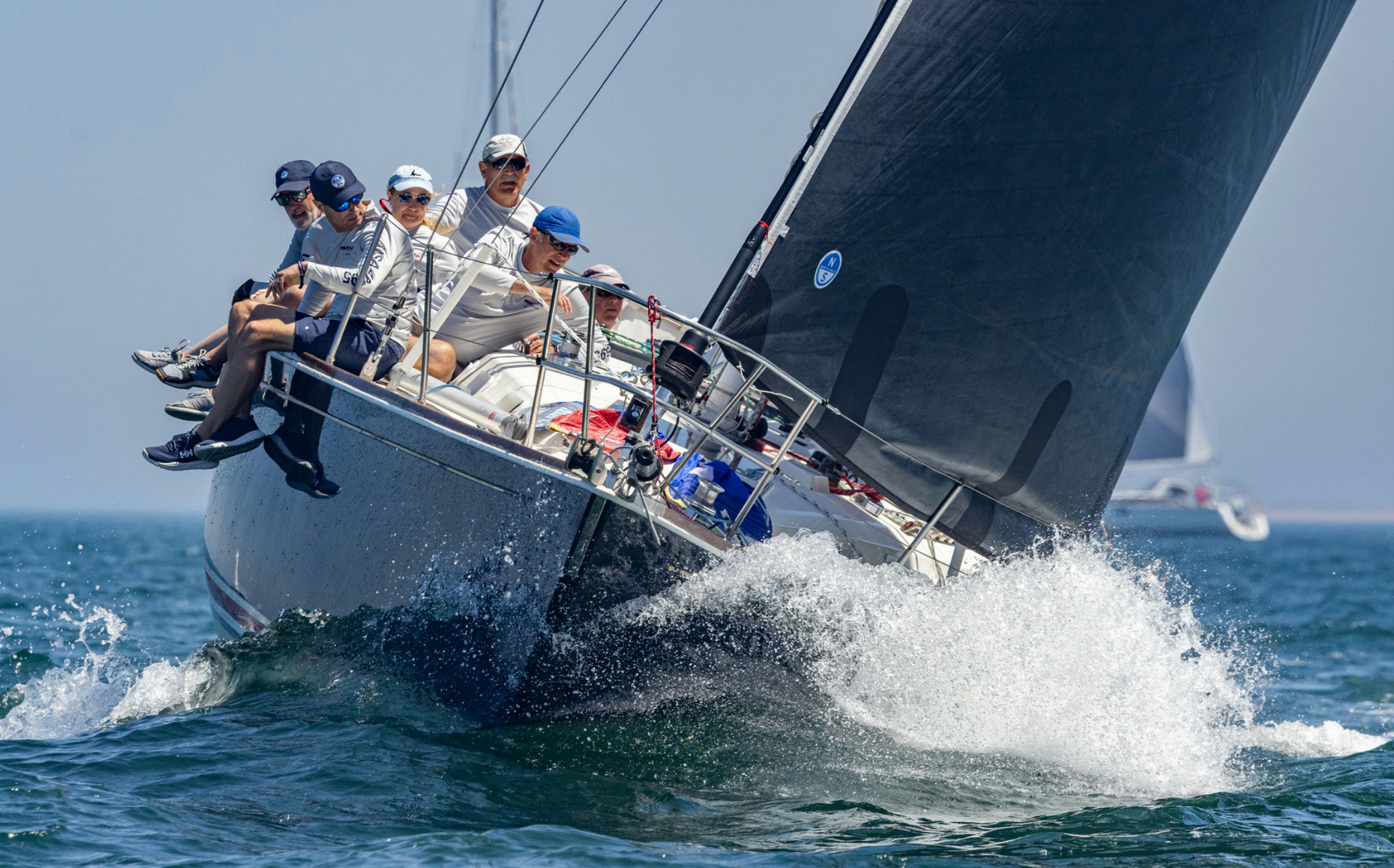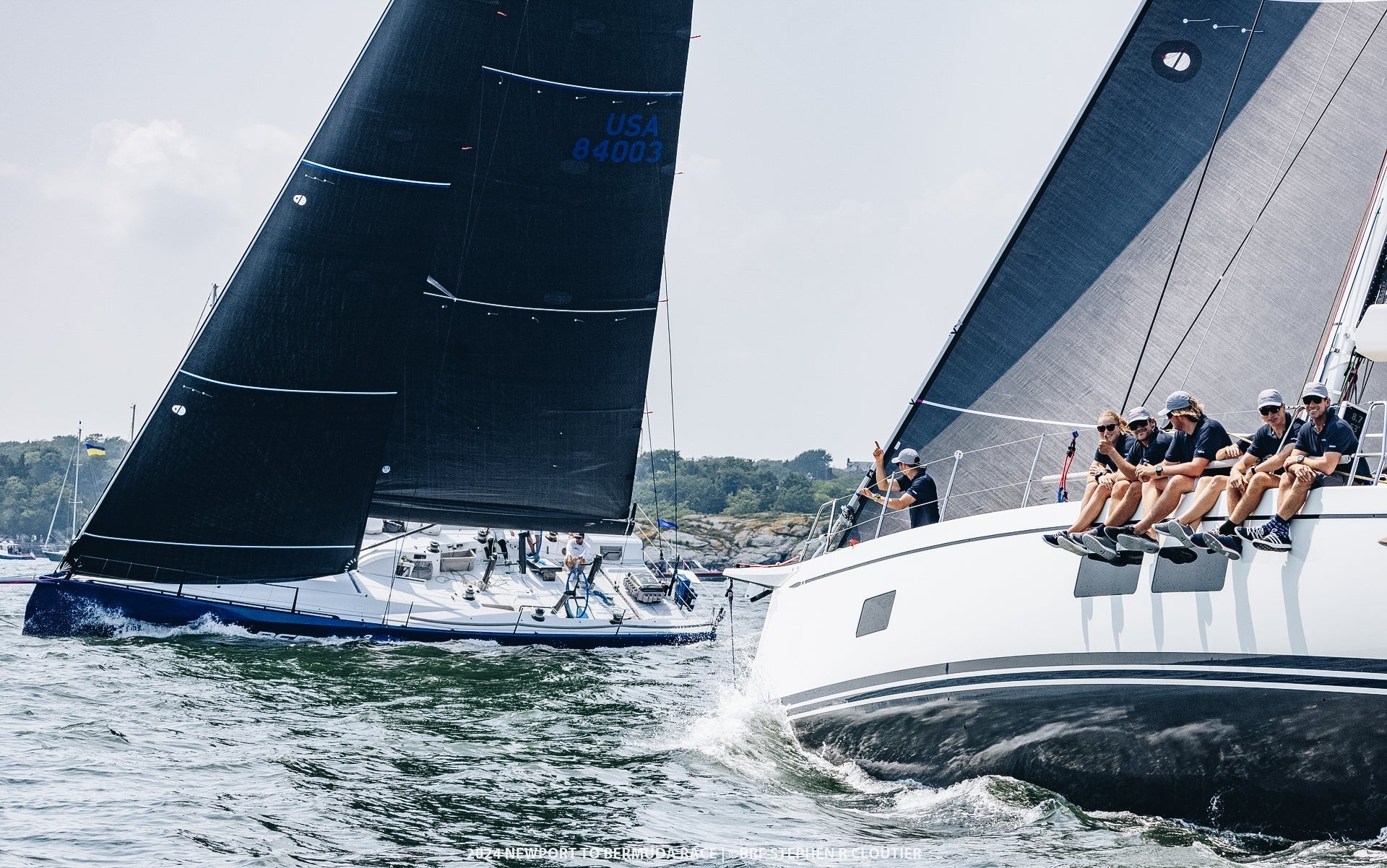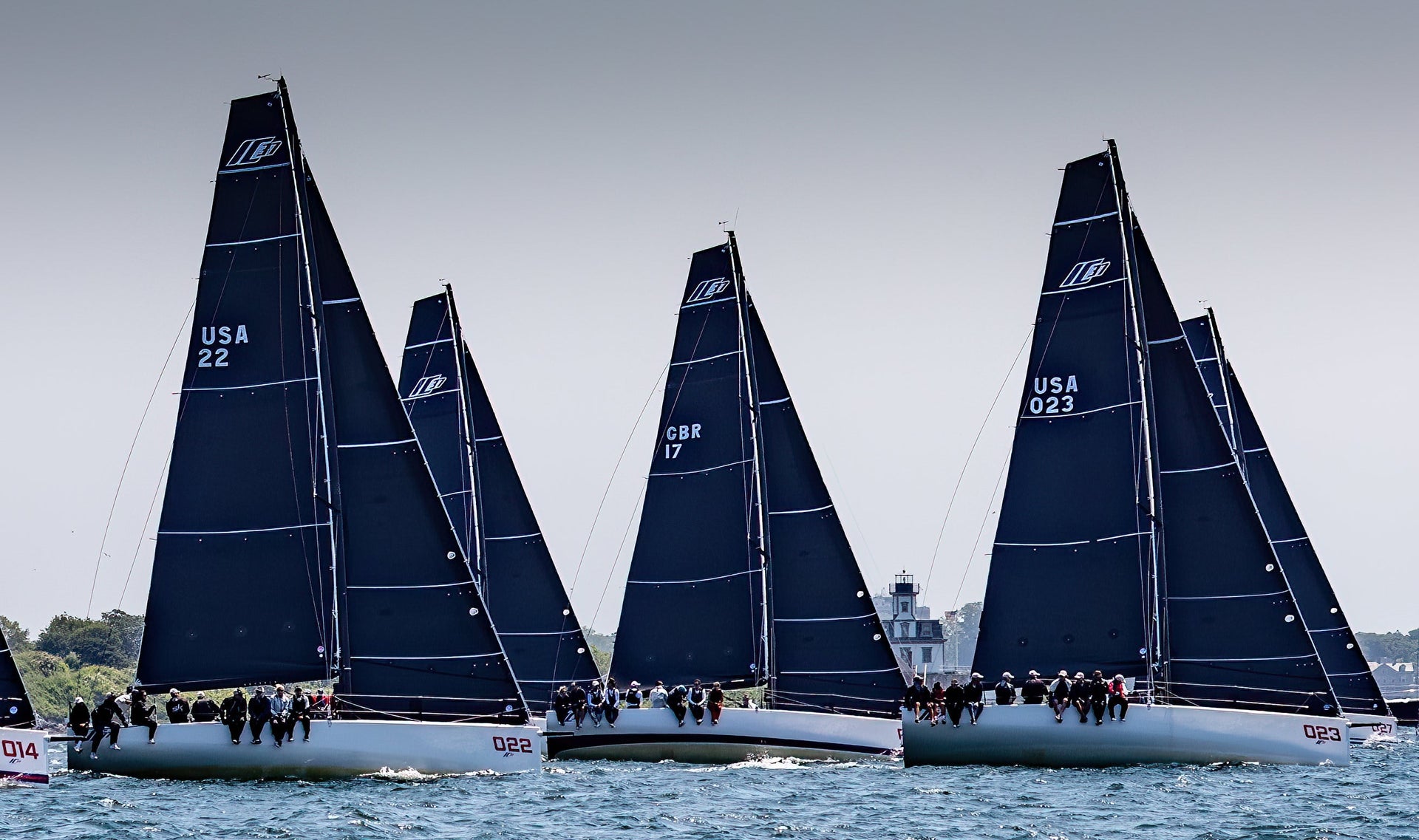ROAD TO THE J/22 WORLDS: WHAT WE LEARNED AT THE ANNAPOLIS NOOD
Annapolis NOOD: Road to the J/22 Worlds
Zeke Horowitz on overcoming the challenges of Chesapeake Bay
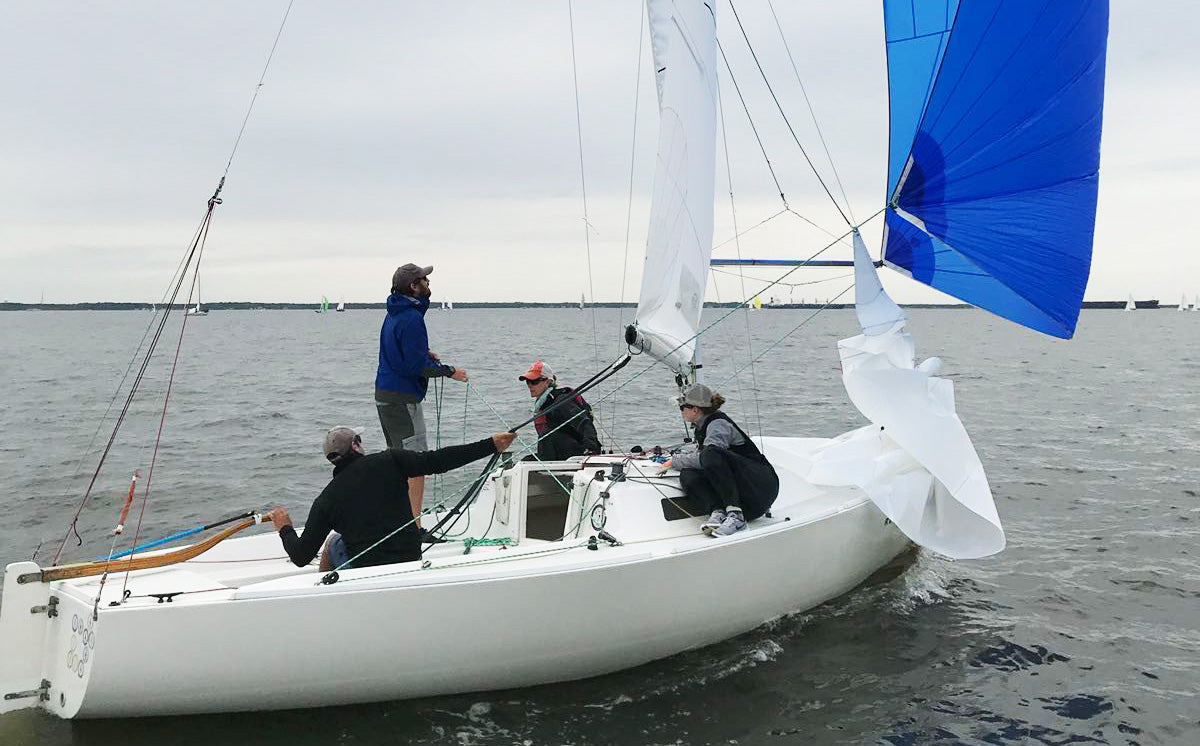
This year’s edition of the Helly Hansen Annapolis NOOD brought almost 200 boats to the Chesapeake Bay for one of the biggest one design festival events of the year. Among the 14 one design classes, the J/22 class was the largest with 32 boats competing. There is lots of excitement amongst the J/22 class as we approach the 2018 World Championship in Annapolis this September. While, as usual, the J/22 fleet was focused on having fun and visiting with old friends, there was definitely a sense of urgency as every team wanted to give it their all and get some solid practice in at the Worlds venue.
Day 1 brought a beautiful southerly to the mouth of the Severn River where our course was set and run by the Race Committee from the Severn Sailing Association. With a dismal forecast for days 2 and 3, the RC was determined to get as much racing in as possible. Every start went off with an I over Z penalty which led to lots of letters on the score-card after the 5 race day. While the breeze was certainly the best of the 3-day regatta, it was anything but steady on our course. The holes on the course were absolutely tragic and it wasn’t uncommon to see a competitor five boat lengths away from you going twice your speed. Combined with the typical Chesapeake Bay chop, this made for some pretty frustrating moments. Patience was key and the left side paid almost every time. It was imperative that the helmsman stay 100% focused on sail trim and tell tales so that the boat was always moving as fast as possible while the tactician kept their head out of the boat to find the pressure and avoid the holes. With upwind current most of the day, it made starting at the pin relatively easy because you could set up lower in the starting box and let the current help carry you up to the line.
Since the left side of the course was so favored, it really came down to execution. If you could nail a pin end start and get left, you would usually be in the top group at the weather mark. Of course, as soon as we figured this was a 100% game plan, the final race saw another wind reset and the boats that came out of the right won the first beat! Welcome to Annapolis!
Days 2 and 3 saw a very similar forecast with light winds out of the North and some rain showers throughout the day. Pre-race homework including watching the fleets in front of us was key to deciding on our game plan. It seemed like often times the fleet would start in a left shift, but the pressure would wind them right shortly after the start -ultimately leading to more pressure at the top left. We saw this repeatedly with the fleets in front of us so our general game plan was to start middle-boat so we could take advantage of the initial right pressure and get us to the left at the top. Of course our game plan didn’t always work out due to some bad starts and some pretty whacky conditions with several total glass-offs and fleet inversions. Nonetheless it was a great lesson in pre-race home work and how important it is to develop a solid game plan based on what you’ve learned.
Our team managed to squeak out a victory over the immensely competitive group that raced at this regatta. But much like the rest of the group here, the primary focus was on coming away with some good lessons that can be applied to the rest of the season as we prepare for the Worlds. Here are a few takeaways from our team that we look forward to improving upon on the road to the Worlds:
Don’t underestimate the impact a large fleet has on wind speed and direction.
Especially in light air, the group of boats all gathered on the starting line drastically decreases the wind speed and makes your angle of attack to the starting line greater. Keep this in mind to avoid being late and in the second (or third) row at the start.
Take the time to perfect your rig-tune before each race and always error on the softer side.
The J/22 has a pretty sensitive “groove” as it pertains to rig tune so it’s crucial to do numerous checks before each race to make sure you have the right amount of “dangle” in your leeward shroud and side sag (or poke) in the middle of the mast. It’s better to be caught too loose than too tight!
Define the roles on your team.
Boat speed is king and that should be the helmsman’s primary focus. There are big gains to be made from minor tweaks in sail trim set up and accurate driving. Don’t let the driver look around too much! It’s the responsibility of the tactician and other crew(s) to make sure the boat is in the right places on the course.
Be conservative and avoid big mistakes!
Often times at the end of a regatta it’s the team that made the fewest big mistakes that comes away with the hardware. Keep this mind in the starting area and at marks especially. If you are fast, you can get away with conservative starting and tactics and that is always the recipe for success!
Feel free to contact Zeke, our local Annapolis J/22 expert if you need assistance getting ready to the Worlds.
Learn more about North’s fast J/22 sails.
| Helly Hansen Annapolis NOOD | ||
| J/22 Class – Powered By North Sails | ||
| 1 | Uncle Fluffy / Zeke Horowitz | |
| 2 | Hot Toddy / Jeff Todd | |
| 3 | Dusty / Pete Levesque | |
| 4 | Scooby / JR Maxwell* | |
| 5 | Rythmic Pumping / Aden King | |
| 6 | Mo’ Money / Victor Snyder | |
| 7 | The Jug 4 1 / Chris Doyle | |
| 10 | Capstan Consulting / Brad Julian | |
| * Denotes Partial North Sails Inventory | ||
